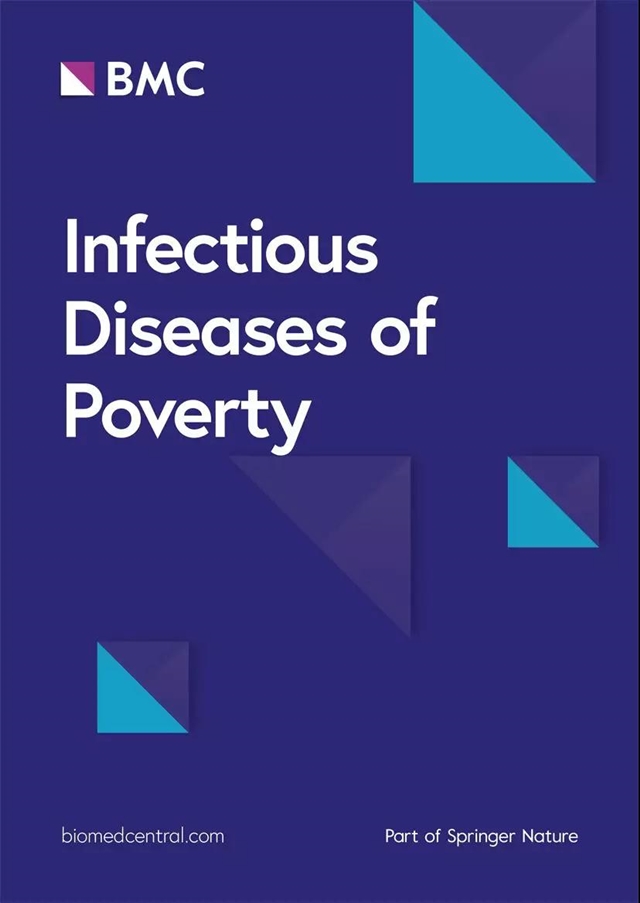中国大陆 11 个气候区季节性流感传播的流行病学特征
IF 5.5
1区 医学
Q1 INFECTIOUS DISEASES
引用次数: 0
摘要
以往的研究提供了一些证据,证明气象因素影响季节性流感在不同地区和纬度的传播模式。然而,基于气候带的季节性流感活动研究仍然缺乏。本研究旨在利用基于生态学的柯本-盖革气候带分类系统,比较中国大陆季节性流感的时空流行特征,并评估开发预警系统的可行性。2014年至2019年县市级流感周病例数来源于中国国家传染病疫情报告信息系统。应用流行病时间指数、时间序列季节性分解、空间建模理论(包括莫兰 I)和地方空间关联指标来识别流感传播的时空模式。所有气候区都在冬春季节出现高峰。干旱、沙漠、寒冷(BWk)呈现第一个高峰。只有热带、热带草原区(Aw)和温带、冬季干燥夏季炎热区(Cwa)有独特的夏季高峰。温带无旱季和夏季炎热区(Cfa)的平均发病率(IR)最高,为 1.047/100,000。全球 Moran's I 显示,平均 IR 有明显的聚类趋势(z = 53.69,P < 0.001),当地 Moran's I 在 Cfa 和 Cwa 发现了高聚类。不同气候区三个年龄组的 IR 存在差异(0-14 岁:F=26.80,P<0.001;15-64 岁:F=25.04,P<0.001;65 岁以上:F=5.27,P<0.001)。0-14岁年龄组在Cwa和Cfa中的平均IR最高(IR = 6.23和6.21),季节性分解显示其在冬季和春季有独特的双峰。季节性流感在不同气候区表现出不同的时空模式。季节性流感主要出现在 BWk,随后出现在 Cfa 和 Cwa。Cfa、Cwa 和 BSk 是季节性流感流行的高危地区。研究结果将为开发基于气候带的季节性流感预警系统提供科学依据。本文章由计算机程序翻译,如有差异,请以英文原文为准。
Epidemiological features of seasonal influenza transmission among 11 climate zones in Chinese Mainland
Previous studies provided some evidence of meteorological factors influence seasonal influenza transmission patterns varying across regions and latitudes. However, research on seasonal influenza activities based on climate zones are still in lack. This study aims to utilize the ecological-based Köppen Geiger climate zones classification system to compare the spatial and temporal epidemiological characteristics of seasonal influenza in Chinese Mainland and assess the feasibility of developing an early warning system. Weekly influenza cases number from 2014 to 2019 at the county and city level were sourced from China National Notifiable Infectious Disease Report Information System. Epidemic temporal indices, time series seasonality decomposition, spatial modelling theories including Moran’s I and local indicators of spatial association were applied to identify the spatial and temporal patterns of influenza transmission. All climate zones had peaks in Winter-Spring season. Arid, desert, cold (BWk) showed up the first peak. Only Tropical, savannah (Aw) and Temperate, dry winter with hot summer (Cwa) zones had unique summer peak. Temperate, no dry season and hot summer (Cfa) zone had highest average incidence rate (IR) at 1.047/100,000. The Global Moran’s I showed that average IR had significant clustered trend (z = 53.69, P < 0.001), with local Moran’s I identified high-high cluster in Cfa and Cwa. IR differed among three age groups between climate zones (0–14 years old: F = 26.80, P < 0.001; 15–64 years old: F = 25.04, P < 0.001; Above 65 years old: F = 5.27, P < 0.001). Age group 0–14 years had highest average IR in Cwa and Cfa (IR = 6.23 and 6.21) with unique dual peaks in winter and spring season showed by seasonality decomposition. Seasonal influenza exhibited distinct spatial and temporal patterns in different climate zones. Seasonal influenza primarily emerged in BWk, subsequently in Cfa and Cwa. Cfa, Cwa and BSk pose high risk for seasonal influenza epidemics. The research finds will provide scientific evidence for developing seasonal influenza early warning system based on climate zones.
求助全文
通过发布文献求助,成功后即可免费获取论文全文。
去求助
来源期刊

Infectious Diseases of Poverty
Medicine-Public Health, Environmental and Occupational Health
CiteScore
16.70
自引率
1.20%
发文量
368
审稿时长
13 weeks
期刊介绍:
Infectious Diseases of Poverty is a peer-reviewed, open access journal that focuses on essential public health questions related to infectious diseases of poverty. It covers a wide range of topics and methods, including the biology of pathogens and vectors, diagnosis and detection, treatment and case management, epidemiology and modeling, zoonotic hosts and animal reservoirs, control strategies and implementation, new technologies, and their application.
The journal also explores the impact of transdisciplinary or multisectoral approaches on health systems, ecohealth, environmental management, and innovative technologies. It aims to provide a platform for the exchange of research and ideas that can contribute to the improvement of public health in resource-limited settings.
In summary, Infectious Diseases of Poverty aims to address the urgent challenges posed by infectious diseases in impoverished populations. By publishing high-quality research in various areas, the journal seeks to advance our understanding of these diseases and contribute to the development of effective strategies for prevention, diagnosis, and treatment.
 求助内容:
求助内容: 应助结果提醒方式:
应助结果提醒方式:


